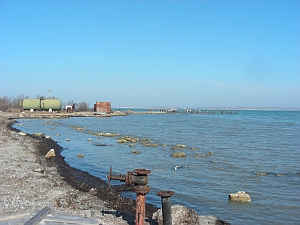Health of the sea
Recent studies have identified eutrophication, largely the result of human activities, as the most significant cause of the Black Sea’s environmental decline - especially in the coastal areas. This is the name given to the phenomenon of over-enrichment of the seawaters by essential nutrients, mainly nitrates and phosphates, the dissolved compounds of nitrogen and phosphorus. Both nutrients are abundant in wastewaters, even after treatment. The waste of domestic and industrial sources is discharged either directly into the sea or through the rivers and streams that feed into the sea. The practical significance of this phenomenon is on the increase not only for the Black Sea but also for the rivers, inland water bodies and reservoirs.Agriculture is another important source of nutrient pollution. The major change in agricultural production during the late 1960s is associated with the use of large amounts of fertilizers and pesticides to ensure high yields. Intensive animal farms were also established to assure cheaper animal produce. Fertilizers and animal waste remain a major source of nitrates and phosphates from agriculture.
 The mechanism of pollution is worth considering in greater detail. The essential nutrients, though non-toxic, create problems because their components are easily utilized by the tiny floating plants, found in the surface waters, for their life functions. The effect is very much like the enrichment with fertilizers: it stimulates the growth of the miniature plants living in the sea that are known as plankton algae or phytoplankton that perform photosynthesis. Their proliferation, known as algae blooms in the Black Sea, poses threats to the ecosystem in two ways.
The mechanism of pollution is worth considering in greater detail. The essential nutrients, though non-toxic, create problems because their components are easily utilized by the tiny floating plants, found in the surface waters, for their life functions. The effect is very much like the enrichment with fertilizers: it stimulates the growth of the miniature plants living in the sea that are known as plankton algae or phytoplankton that perform photosynthesis. Their proliferation, known as algae blooms in the Black Sea, poses threats to the ecosystem in two ways.The minute blooming algae on the surface form a thick layer, resembling a cloud, which blocks sunlight. In this way they prevent the sunlight entirely or partially from reaching the larger plants on the seabed below – sea grass and algal seabed, which in turn begin to die. This seabed vegetation provides food, shelter and a place to breed for other marine creatures like worms, crustaceans, demersal fishes etc. With the destruction of their living environment they leave or die decreasing their numbers, which means less food for other marine species including mammals and birds. Yet the threat does not end there.
The second threat comes when the algae eventually come to the end of their lifecycle and die. Their bodies are decomposed by bacteria, which use up a lot of oxygen in the process, oxygen that is vital for marine organisms like seaweed, jellyfish, mussels, fish, crabs etc.
Due to the specific structure of waters in the Black Sea and their stratification into two layers – upper layer containing oxygen and lower anoxic layer, which mix very poorly, eutrophication has far reaching and undesirable effects.
Falling to the seabed dead organisms begin to decay. Vertical water circulation is poor, so in the process of decomposition any oxygen in the lower layer is used up. Some bacteria decomposing organic matter use the oxygen in sulphate, a natural component of seawater.
This process generates hydrogen sulphide, which is present in the entire lower layer of the Black Sea. It constitutes 87% of its volume and is devoid of marine life. As a result biodiversity decreases and with it the possibilities of the system for self-regulation



